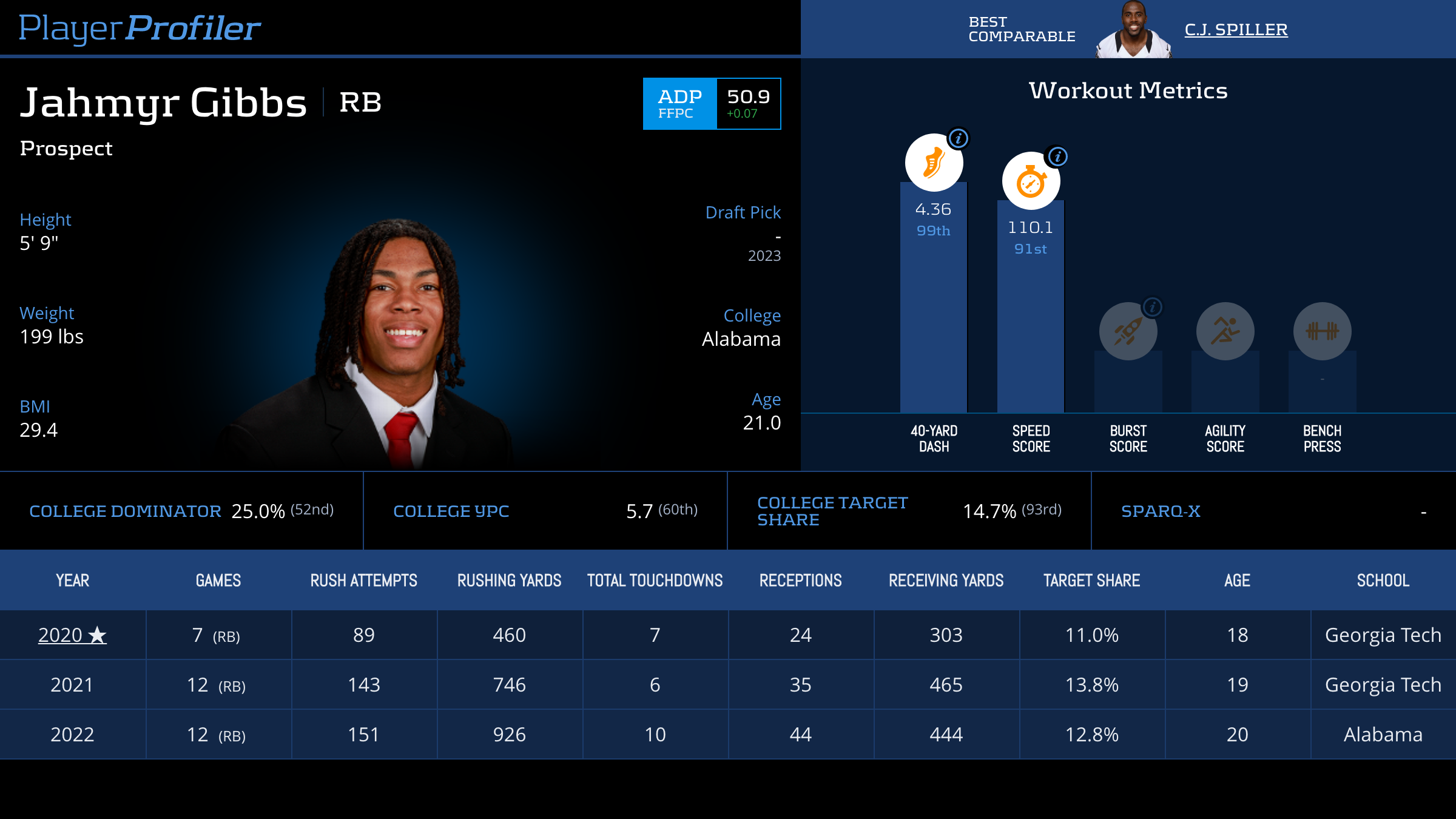The Risk of Drafting Running Backs Early in the Offseason: A Case for the “Zero Running Back” Strategy in Best Ball
Introduction
When it comes to best ball fantasy football, drafting running backs early in the offseason can be a risky proposition. As we find ourselves in the first week of June, the draft season is in full swing, and there is a significant amount of uncertainty and volatility surrounding running backs.
In this article, we will explore the reasons why running backs tend to lose value as we move further away from the start of the NFL season. This analysis supports the “Zero Running Back” or “Hero Running Back” strategy. This strategy advocates for minimizing risk by focusing on other positions in the early rounds of drafts, usually Rounds 1-6.
The Impact of Free Agency and Rookie Drafts
One of the primary reasons running backs become riskier as the offseason progresses is due to free agency and rookie drafts. Free agency sees players changing teams. This can have a direct impact on the value and roles of running backs. For example, David Montgomery signing with the Detroit Lions negatively affected D’Andre Swift‘s fantasy prospects at the time. Or Jamaal Williams signing with the New Orleans Saints could limit the Red Zone opportunities for Alvin Kamara who has 65 Red Zone carries over the past two seasons. Additionally, the uncertainty surrounding free agents like Leonard Fournette and Ezekiel Elliott can disrupt what might be perceived as stable running back situations on a new team and limit their teammate’s upside.

Jahmyr Gibbs Advanced Stats & Metrics Profile
Rookie drafts also play a role in the fluctuation of running back values. If a highly drafted rookie running back enters the picture, it can significantly impact the value of established running backs on the team. Enter Bijan Robinson to Atlanta. Here comes Jahmyr Gibbs to Detroit. Enter Zach Charbonnet to Seattle. The draft capital invested in these rookies often leads to high expectations and increased competition for touches. This potentially diminishes the fantasy outlook of other running backs on the roster.
Injuries and Clarity on Pre-Existing Injuries
Injuries during the offseason, particularly during training camps, can have a profound effect on a running back’s outlook. Hamstring strains, ACL tears, and other injuries can disrupt a player’s preparation and performance leading up to the season. Additionally, the clarity on pre-existing injuries can sway fantasy managers’ decisions. If players like Breece Hall or Javonte Williams are revealed to have a longer recovery timeline than initially expected, it can significantly impact the value in season-long bestball formats. The risk of drafting a player who might miss a substantial portion of the season should be carefully considered.
The Impact of Trades
Trades can also disrupt the fantasy landscape for running backs. A notable example is the trade of D’Andre Swift affecting Kenneth Gainwell, who was impacted when D’Andre Swift became expendable after the Detroit Lions drafted Jahmyr Gibbs. Swift is the more dynamic player with better pedigree and, as a result, caused a decline in Gainwell’s ADP. With the possibility of more running back trades during the offseason, it further emphasizes the risk associated with investing in running backs early in drafts.
Comparing Positional Changes in ADP
To further illustrate the riskiness of running backs during the offseason, let’s examine the changes in average draft position (ADP from Underdog Fantasy) for different positions. From January to May, the average veteran running back lost 17-percent of their ADP value while wide receivers only lost 3.6-percent. Quarterbacks and tight ends fell in between, with quarterbacks losing 14-percent and tight ends losing 5.5-percent of their ADP value on average.
Conclusion
Running backs are the riskiest position to draft early in the offseason. Free agency, rookie drafts, injuries, clarity on pre-existing injuries, and trades all contribute to the volatility and uncertainty surrounding running backs. This supports the “Zero Running Back” or “Hero Running Back” strategy, which suggests minimizing risk by focusing on other positions in the early rounds of drafts.
While every fantasy manager has their own risk tolerance, it is crucial to weigh the potential downsides and uncertainties associated with running backs against the stability and value offered by other positions. By adopting a cautious approach and considering the trends observed during the offseason, fantasy managers can optimize their teams to withstand the long offseason with minimized impact.




